Foraging in the French Alps

“To be honest,” says our guide Simone. “I’ve never seen a mushroom like that before.” Poking out of the forest floor is a pale, heart-shaped fungi oozing what looks like blood. It’s not blood, of course, rather some kind of red liquid but that doesn’t make it appear any less sinister. We later discover that the name of this cartoonishly evil-looking mushroom is “Bleeding Tooth Fungus” and, contrary to appearances, it won’t kill you on the spot. Rather, it’s being researched for its health benefits.

Bleeding Tooth Fungus. Photo: Katja Gaskell
This was one just one of our many finds on a foraging walk in the mountains led by our lively Welsh guide, Simone. The tour is a new one, launched in the summer as part of the recently formed Morzine Mountain Cooperative. The group is made up of seven mountain leaders, each offering unique ways to explore the mountains. Their tours range from challenging trail runs and “parlez” hikes, where you practice French while walking, to night hikes and more holistic experiences such as the Japanese practice of shinrin-yoku, forest bathing.
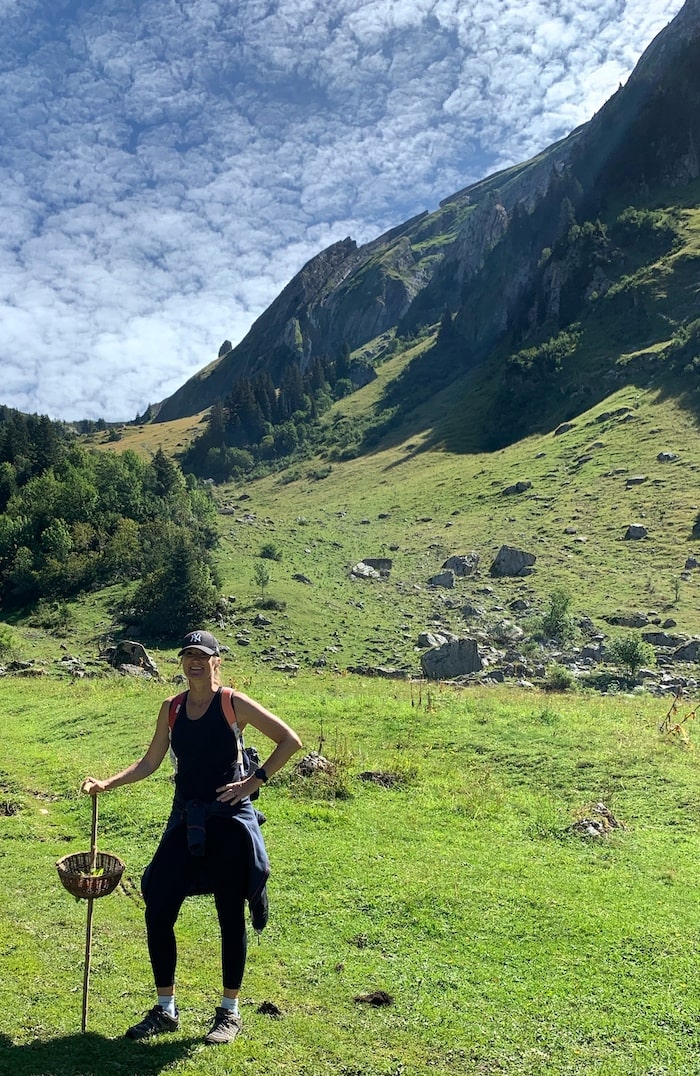
Katja with her foraging basket. Credit: Katja Gaskell
Our group of six meet after breakfast in the centre of Morzine and jump into Simone’s van for the 15-minute journey to the Vallée de la Manche. During winter months, this area is home to some of the best off-piste skiing in the Portes du Soleil region. In summertime, it’s a popular spot for hiking, both with day-trippers and those attempting the GR5 (Grand Randonnée Cinq), a beautiful but challenging 660km trail that starts at Lac Leman and finishes in Nice or Menton, passing through the French Alps along the way.
Simone hands out containers for our foraging finds and gives a quick safety briefing: Wash everything before eating it and cross-check all that you find. And then we’re off, walking briefly up the well-marked trail before Simone cuts into the forest and beckons for us to follow. We cross over a small ditch, climb up a grassy bank, navigate our way over fallen logs of varying sizes and suddenly we feel a long way from anywhere. Cow bells ring in the distance and the sunlight trickles through the tree canopy as we walk carefully over a green carpet of spongy sphagnum moss.
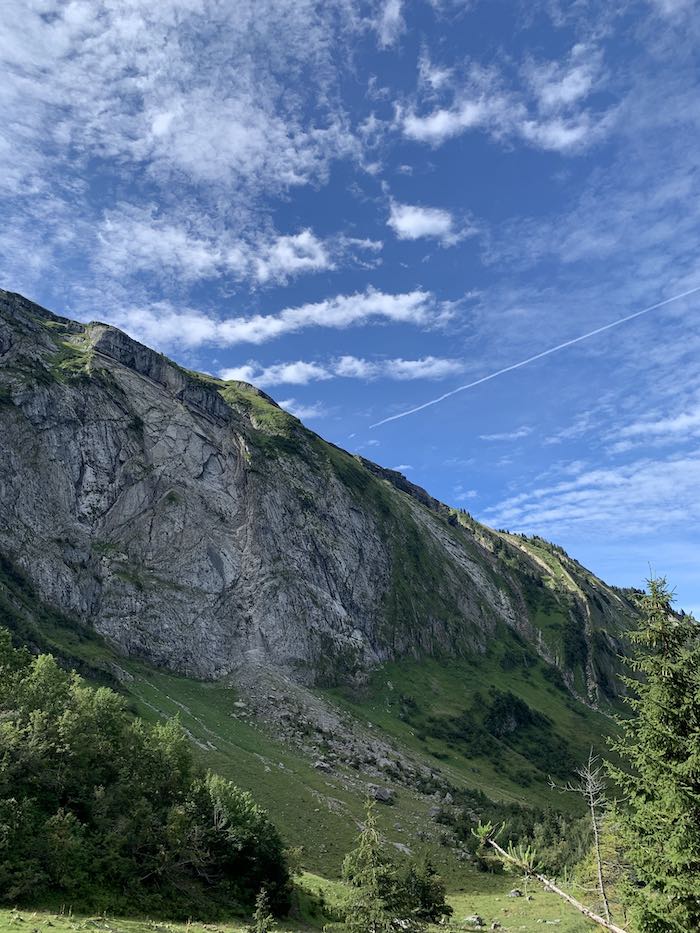
Mountain views of the Alps. Credit: Katja Gaskell
Our walk coincides with the start of wild mushroom season and the tail-end of berry season. We spy a patch of skinny, bell-shaped fungi and then a sprinkling of raspberry plants that we carefully pick and place in our baskets. A little deeper into the woods and we spy the aforementioned poisonous-looking mushroom and then a large blueberry patch. Although, upon closer inspection it seems that the forest animals found the fruit first.
Foraging is serious business in France and it’s not just the animals that you have to compete with. Locals guard their patches with vigour, passing down secret mushroom locations through generations.
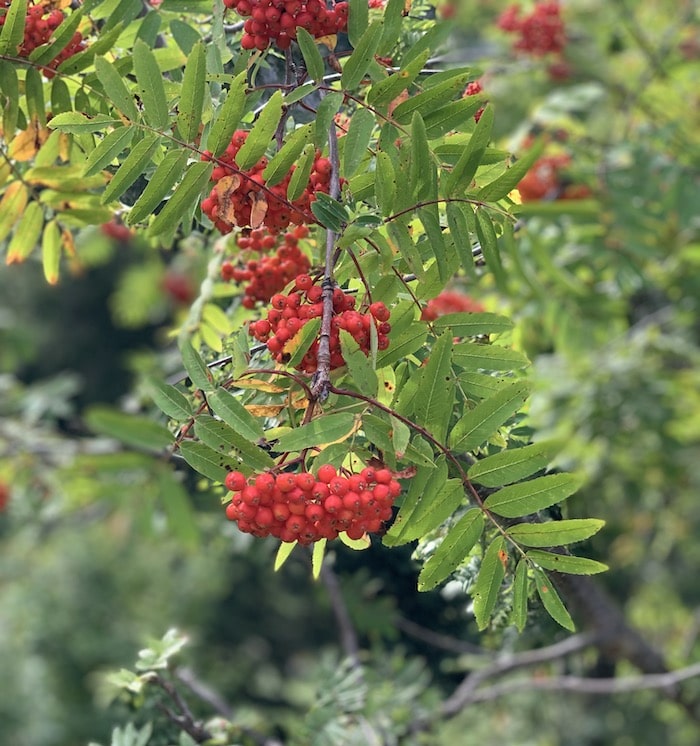
Rowan Berries. Credit: Katja Gaskell
“It took me a long time to find good places to forage here,” says Simone. “Some patches I found myself and others, Valerie, a kind local lady, shared with me. But you are constantly learning and discovering.”
Back on the path and Simone points out a tall, sturdy plant with hairy stems and purple flowers.
“That’s Wild Sage Clary,” she explains. “The leaves can be added to salads or used to make tea and it helps with digestion.”
This is the other thing that Simone is passionate about: medicinal plants. During our morning together, she introduces us to a large number of flowers, trees and leaves that boast medicinal properties. The leaves of the lilac-coloured Rosebay willowherb, proliferous in the mountains during summer months, can be added to salads or stir-fries and will help clear up coughs and colds. The bamboo-like Horsetail plant is good for urinary tract infections. Green needles from the Norwegian spruce added to hot water makes a refreshing tea and freshly picked nettle soup is rich in energy-boosting Vitamin D. The delicate-looking Yarrow plant not only fights flu but has a coagulating factor, which means it can be used as a bandage to encourage blood to clot.
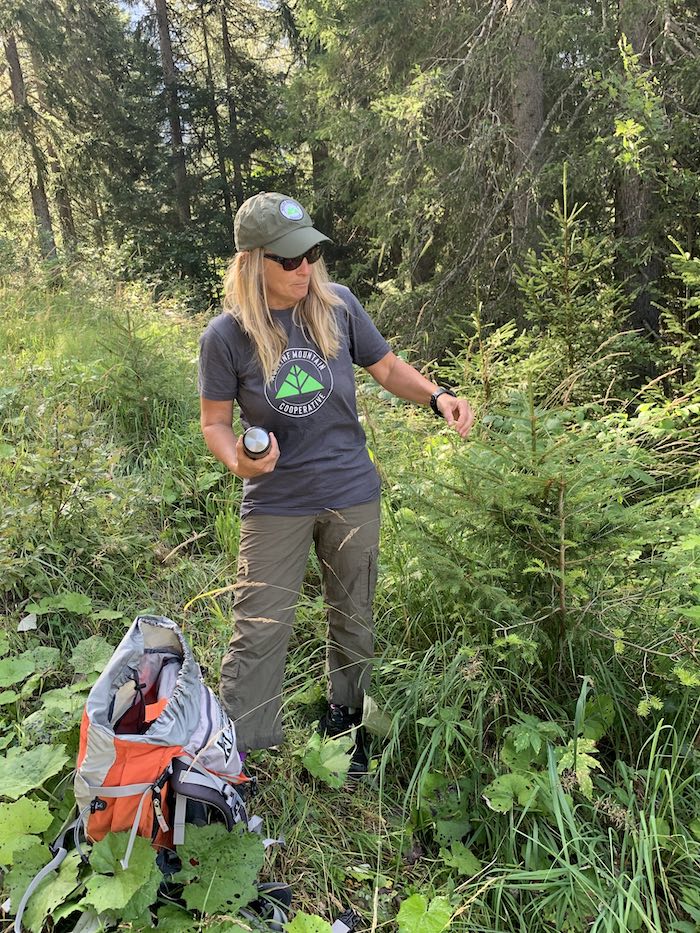
Credit: Katja Gaskell
We walk further into the valley, crossing over a mountain stream and stopping to pick fluffy-white Puffball mushrooms. “The whiter the better,” says Simone. Porcini mushrooms (cèpes) and black trumpet mushrooms (trompettes de la mort) are two other varieties of fungi commonly found in the mountains, but it seems we’re too early in the season to spot them.
Eventually we arrive at a clearing and find foraging gold: a bounty of Rowan berries, commonly used to make jam, and raspberry bushes rich with soft pink berries. We all collect what we need and start the gentle walk back to the van, pausing occasionally to learn about another plant or to pick a stray mushroom. We depart with full baskets and a better understanding of the riches that the forest holds. I can’t wait to go back.
DETAILS
You can book a foraging tour with Simone via the Morzine Mountain Cooperative: morzinemountaincooperative.com/about
For more information about Morzine and to plan your trip, visit the official tourism website: www.morzine-avoriaz.com
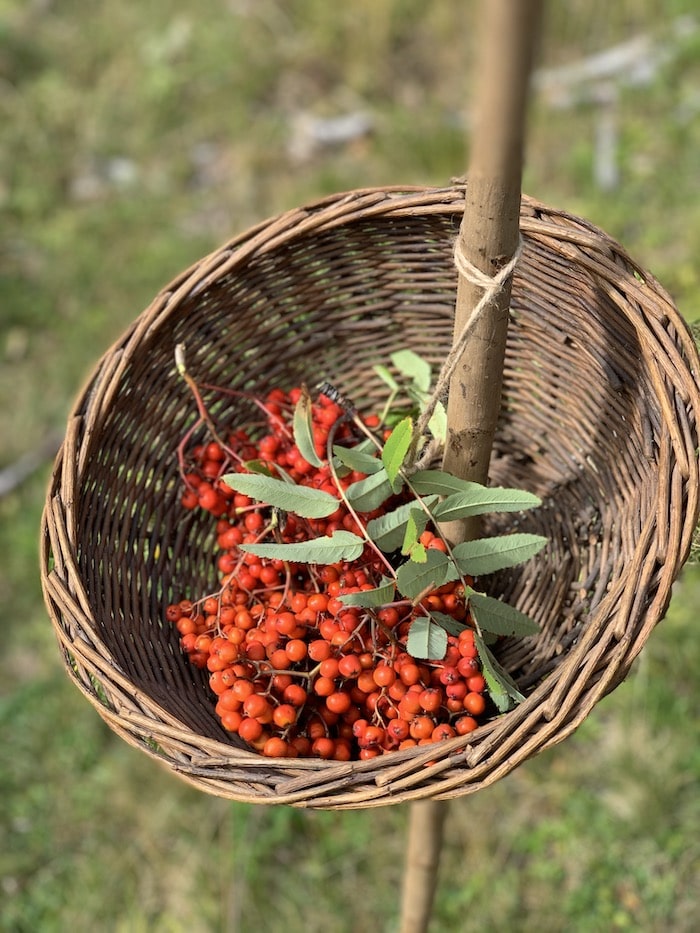
Foraging basket with Rowan berries. Credit: Katja Gaskell
Share to: Facebook Twitter LinkedIn Email
More in french alps, hiking
Leave a reply
Your email address will not be published. Required fields are marked *



